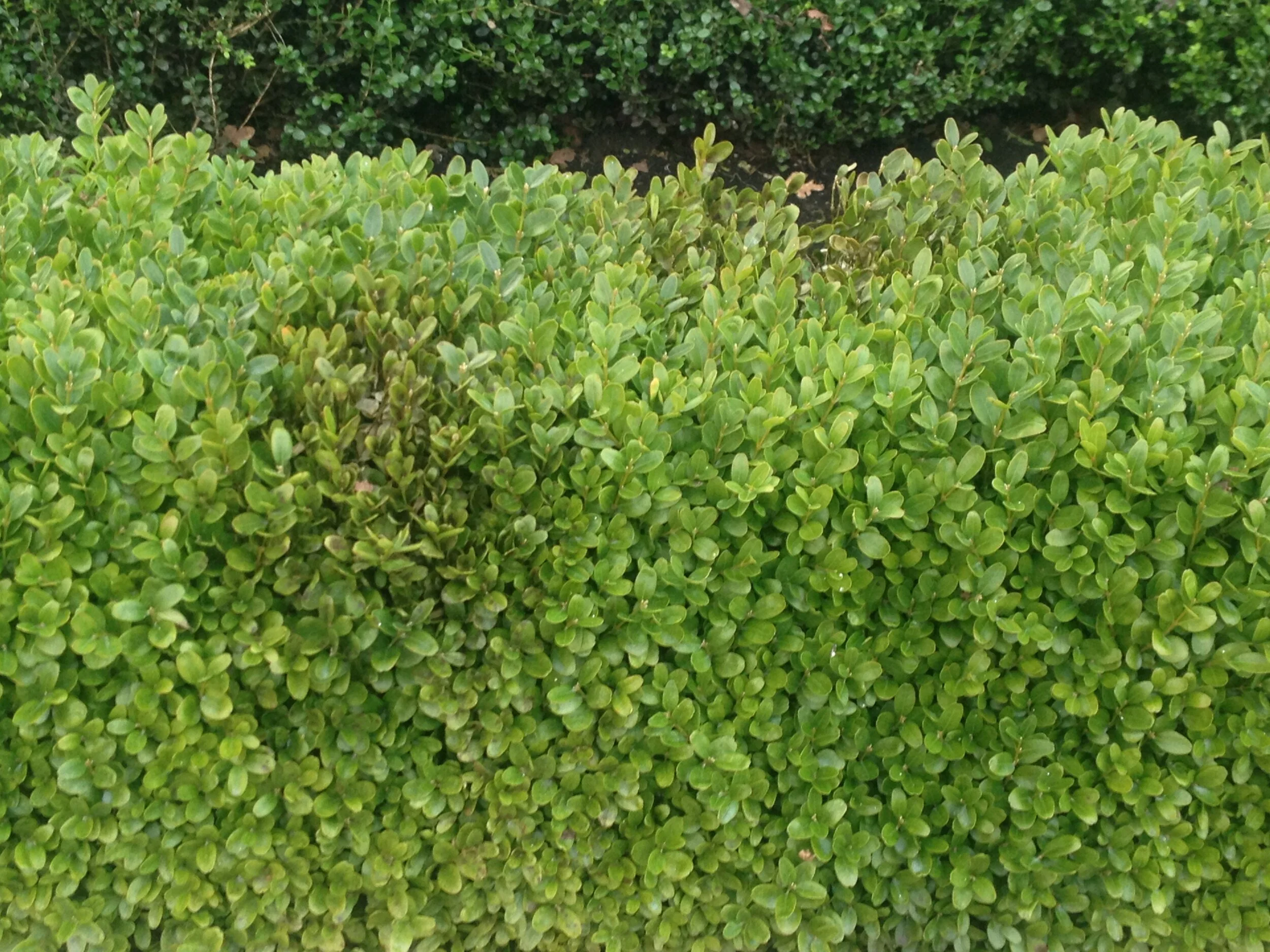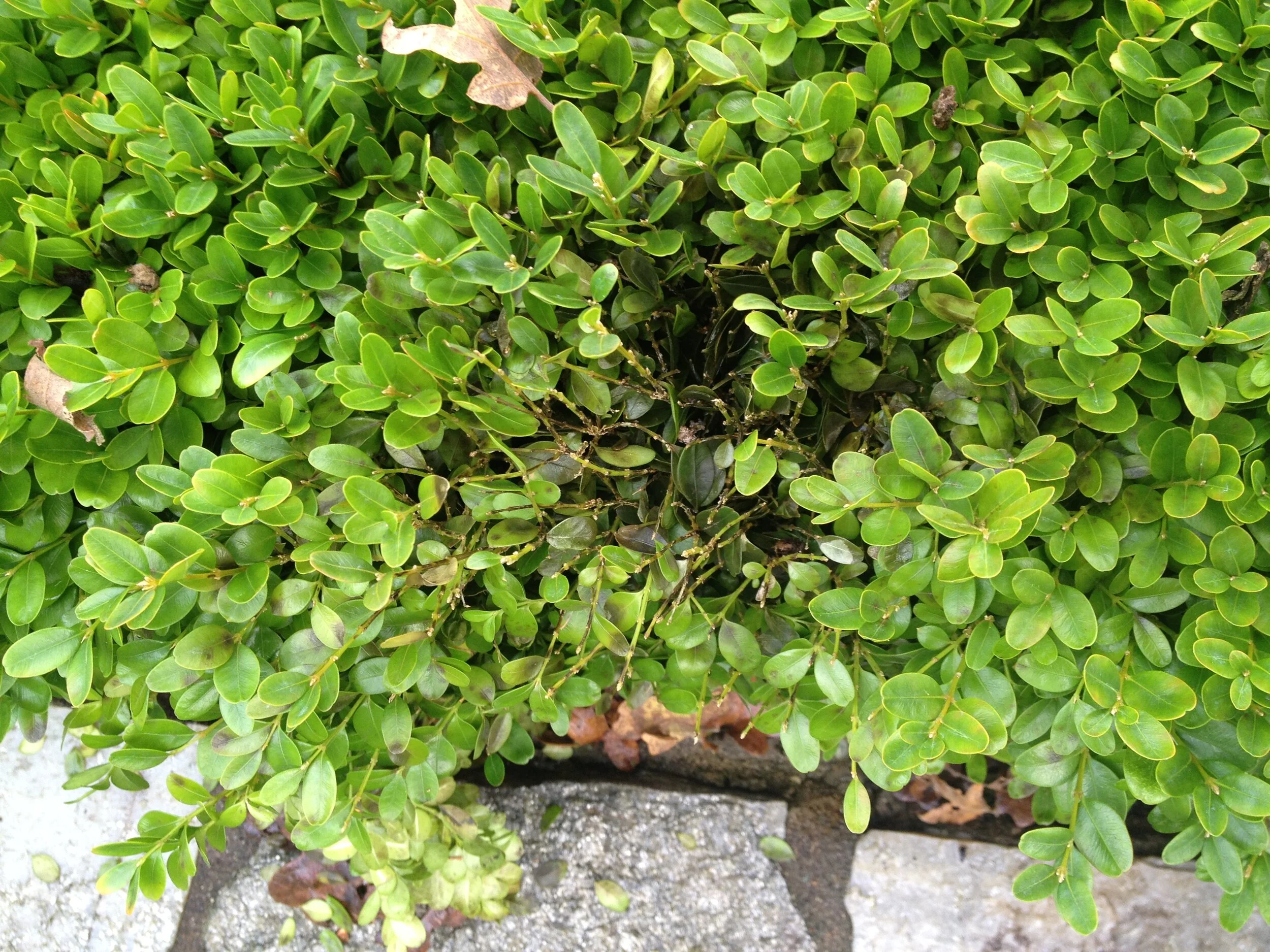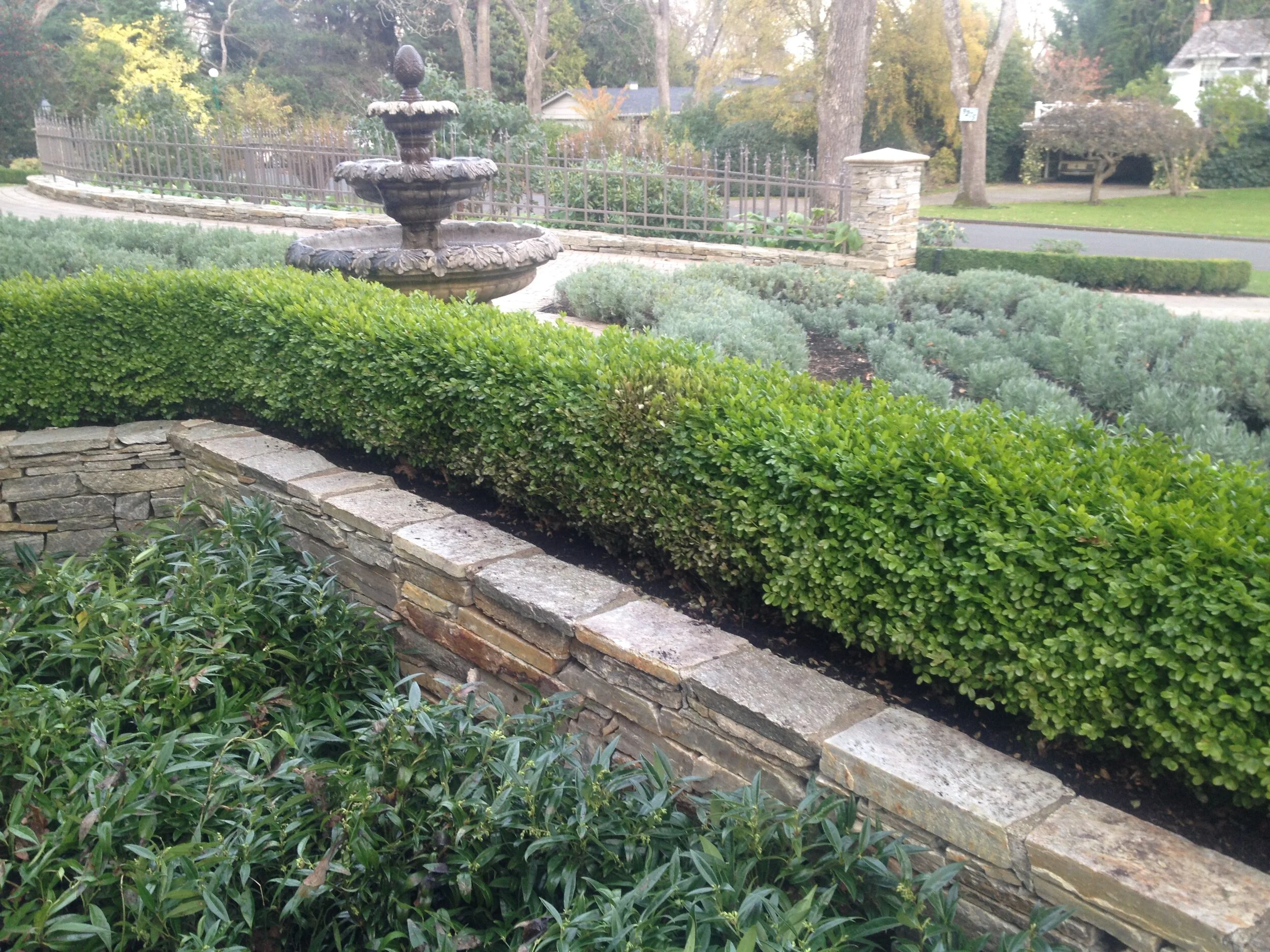Boxwood blight has struck again this fall. Ughh. We’ve been battling it in one of my client’s gardens for 9 years - it was introduced on newly-purchased boxwoods that were added as low hedging around existing garden beds. The new ones were infected but not showing symptoms and it wasn’t until a few months after planting that I noticed some leaf dieback and small defoliated sections in the new hedging.
the first outbreak in November 2011
It is shocking how easily and steadily it spreads when conditions are ripe: when rainfall, warmth and humidity coincide. It can really move fast in Victoria in September and October, and will persist and flair during mild periods over the winter. Buxus sempervirens ‘Suffruticosa’ is particularly prone to infection and I’ve found that the blight mostly manifests on plants in areas where the soil is poorly drained and stays wet over winter.
this is what you will see first if you have an outbreak: slightly browning patches on the top or sides, called lion’s tails.
Its been quite a journey since then, trying to find information about the blight - this was one of the first infections in BC so there was precious little information about the disease. I read everything I could find to try to figure out what to do. Mostly stuff from the UK because they’ve been dealing with it there for much longer, but I found the management information a little too general and not specific enough for my liking. And then I found Virginia Tech.
Virginia Tech Boxwood Blight Task Force has compiled excellent management guidelines, specifically how to avoid bringing it to your garden or nursery in the first place, and, if you do discover you have it on your property, how to manage your site so you don’t spread it further. Also good research on resistant cultivars and alternatives to box. Find it here:
https://www.pubs.ext.vt.edu/content/dam/pubs_ext_vt_edu/PPWS/PPWS-29/PPWS-29-pdf.pdf
detail of the infection point - note the black spots on some of the green leaves, that’s the start before the leaf blackens entirely and drops off. be careful not to confuse it with mud splattering on the lower leaves during periods of heavy rain.
can you spot it in this section of hedge?
I believe we have tried just about everything to manage it at this point: infected plant removal and burning, infected soil removal, soil sterilization with weeding torches, removing all the plants (infected or not) in the vicinity of infected plants, switching from spray irrigation to drip, annual topdressing, fertilizing with liquid kelp every fortnight, cleaning and sterilizing tools, using disinfecting footbaths, and dedicated systems for working through the garden in order to minimize contact with blighty zones.
In the end, we have managed not to spread it to many pre-existing boxwood hedges on the property, but it is an ongoing management concern on the site that we constantly have to be aware of and incorporating into our plans.
infected buxus sempervirens ‘suffruticosa’ in the foreground; resistant cultivar buxus microphylla ‘green beauty’ in the background. its been 5 years since the original outbreak in this area and green beauty still is not bothered by the blight.





